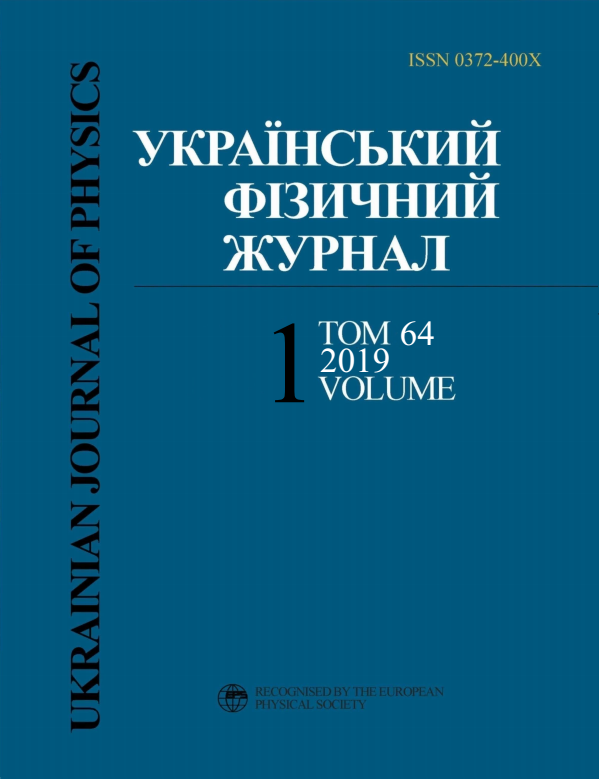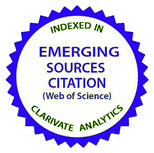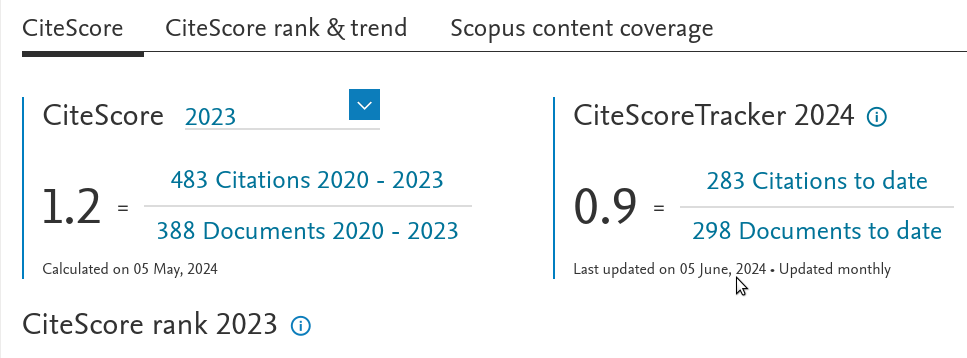Фотореакції макроциклічних сполук на поверхні вюрциту (1010) – взаємовплив конформації та електронних ефектів
DOI:
https://doi.org/10.15407/ujpe64.1.63Ключові слова:
macrocyclic dyes, wurzite, electron transfer, DFTАнотація
Макроциклiчнi сполуки, такi як фталоцiанiн та порфiрин було змодельовано за допомогою методiв функцiонала електронної густини та молекулярної динамiки на поверхнi вюрциту (1010). Було виявлено, що окрема молекула на поверхнi вюрциту стабiлiзується у нахиленому станi пiд кутом 60∘ мiж ї ї кiльцем та поверхнею. Нахил молекули вiдносно поверхнi кристала двояко впливає на перенос заряду з хромофора до напiвпровiдника. Збiльшення кута нахилу призводить до бiльш сильної взаємодiї мiж нижчим рiвнем зони провiдностi напiвпровiдника та LUMO молекули, таким чином пiдвищуючи ймовiрнiсть тунелювання електрона та його iнжекцiї. З iншого боку, при нахилi макроциклу зростає електростатична взаємодiя мiж молекулою та поверхнею кристала, що призводить до зниження LUMO молекули по вiдношенню до мiнiмуму зони провiдностi вюрциту, що, в свою чергу, може перешкоджати переносу електрона. Тип лiнкера та периферiйнi групи можуть значно впливати на взаємне розташування фрагментiв системи, та їх правильний вибiр може сприяти фотоiндукованим реакцiям переносу заряду.
Посилання
P. Docampo, S. Guldin, T. Leijtens, N. Noel, U. Steiner, H. Snaith. Lessons learned: From dye-sensitized solar cells to all-solid-state hybrid devices. Adv. Mat. 26, 4013 (2014). https://doi.org/10.1002/adma.201400486
N. Kaura, M. Singh, D. Pathak, T. Wagner, J. Nunzid. Organic materials for photovoltaic applications: Review and mechanism. Synthetic Metals 190, 20 (2014). https://doi.org/10.1016/j.synthmet.2014.01.022
V. Golovanov, V. Smyntyna, G. Mattogno, S. Kasiulis, V. Lantto. Oxygen interaction of CdS-based gas sensors with different stoichiometric composition. Sensors and Actuators B 26–27, 108 (1995).
S. Dag, S. Wang, L. Wang. Large surface dipole moments in ZnO nanorods. Nano Letters 11, 2348 (2011). https://doi.org/10.1021/nl200647e
S. V. Kilina, D.S. Kilin, O.V. Prezhdo. Breaking the phonon bottleneck in PbSe and CdSe quantum dots: Time-domain density functional theory of charge carrier relaxation. ACS Nano 3 (1), 93 (2009). https://doi.org/10.1021/nn800674n
J.M. Azpiroz, F. De Angelis. Ligand induced spectral changes in CdSe quantum dots. ACS Appl. Mater. Interfaces 7 (35), 19736 (2015). https://doi.org/10.1021/acsami.5b05418
K. Virkki, H. Hakola, M. Urbani, L. Tejerina, M. Ince, M. Diaz, T. Torres, V. Golovanova, V. Golovanov, N. Tkachenko. Photoinduced electron injection from zinc phthalo-cyanines into zinc oxide nanorods – Aggregation effects. J. Phys. Chem. C 121 (17), 9594 (2017). https://doi.org/10.1021/acs.jpcc.7b01562
V.V. Golovanov, B.V. Nazarchuk, V.V. Golovanova, N.V. Tkachenko, T.T. Rantala. Effects of orientation at the phthalocyanine–CdSe interface on the electron transfer characteristics. Phys. Chem. Chem. Phys. 19, 10511 (2017). https://doi.org/10.1039/C7CP00833C
M. Niskanen, M. Kuisma, O. Cramariuc, V. Golovanov, T. Hukka, N. Tkachenko, T.T. Rantala. Porphyrin adsorbed on the (10? 10) surface of the wurtzite structure of ZnO – conformation induced effects on the electron transfer characteristics. Phys. Chem. Chem. Phys. 15 (40), 17408 (2013). https://doi.org/10.1039/c3cp51685g
H. Matsuzaki, T. Murakami, N. Masaki, A. Furube, M. Kimura, S. Mori. Dye aggregation effect on interfacial electron-transfer dynamics in zinc phthalocyanine-sensitized solar cells. J. Phys. Chem. C 118, 17205 (2014). https://doi.org/10.1021/jp500798c
L. Tejerina, M. Martinez-Diaz, M. Nazeeruddin, T. Torres. The influence of substituent orientation on the photovoltaic performance of phthalocyanine-sensitized solar cells. Chem. – Eur. J. 22, 4369 (2016). https://doi.org/10.1002/chem.201600166
H. Imahori, S. Kang, H. Hayashi, M. Haruta, H. Kurata, S. Isoda, S. Canton, Y. Infahsaeng, A. Kathiravan, T. Pascher, P. Chabera, A. Yartsev, V. Sundstrom. Photoinduced charge carrier dynamics of Zn-porphyrin-TiO2 electrodes: The key role of charge recombination for solar cell performance. J. Phys. Chem. A 115, 3679 (2011). https://doi.org/10.1021/jp103747t
M. Griffith, M. James, G. Triani, P. Wagner, G. Wallace, D. Officer. Determining the orientation and molecular packing of organic dyes on a TiO2 surface using X-ray reflectometry. Langmuir 27, 12944 (2011). https://doi.org/10.1021/la202598c
S. Ye, A. Kathiravan, H. Hayashi, Y. Tong, Y. Infahsaeng, P. Chabera, T. Pascher, A. Yartsev, S. Isoda, H. Imahori, V. Sundstr?om. Role of adsorption structures of Zn-porphyrin on TiO2 in dye-sensitized solar cells studied by sum frequency generation vibrational spectroscopy and ultrafast spectroscopy. J. Phys. Chem. C 117, 6066 (2013). https://doi.org/10.1021/jp400336r
V. Golovanov, V. Golovanova, T.T. Rantala. Thermal desorption of molecular oxygen from SnO2 (110) surface: Insights from first-principles calculations. J. Chem. Phys. Solids 89, 15 (2016). https://doi.org/10.1016/j.jpcs.2015.10.010
V. Golovanov, T. Kortelainen, T.T. Rantala. Stability of siloxane couplers on pure and fluorine doped SnO2 (110) surface: a first principles study. Surf. Sci. 604 (19–20), 1784 (2010). https://doi.org/10.1016/j.susc.2010.07.006
N. Ozcan, T. Kortelainen, V. Golovanov, T.T. Rantala, J. Vaara. Electron spin resonance parameters of bulk oxygen vacancy in semiconducting tin dioxide. Phys. Rev. B 81 (23), 235202 (1–10) (2010).
Y. Siao, P. Liu, Y. Wu. Ab initio study of atomic hydrogen on ZnO surfaces. Appl. Phys. Expr. 4, 125601 (2011). https://doi.org/10.1143/APEX.4.125601
V. Smyntyna, V. Golovanov, S. Kasiulis, G. Mattogno, G. Righini. Influence of chemical composition on sensitivity and signal reproducibility of CdS sensors of oxygen. Sensors and Actuators B 24–25, 628 (1995). https://doi.org/10.1016/0925-4005(95)85138-0
M. Arvani, K. Virkki, F. Abou-Chahine, A. Efimov, N.V. Tkachenko, D. Lupo. Photoinduced hole transfer in QD–phthalocyanine hybrids. Phys. Chem. Chem. Phys. 18, 27414 (2016). https://doi.org/10.1039/C6CP04374G
N. Moreira, A. da Rosa, T. Frauenheim. Covalent functionalization of ZnO surfaces: a density functional tight binding study. Appl. Phys. Lett. 94, 193109 (2009). https://doi.org/10.1063/1.3132055
BAND2014, SCM, Theoretical Chemistry, Vrije Universiteit, Amsterdam, The Netherlands, http://www.scm.com.
J. Perdew, A. Ruzsinszky, G. Csonka, O. Vydrov, G. Scuseria, L. Constantin, X. Zhou, K. Burke. Restoring the density-gradient expansion for exchange in solids and surfaces. Phys. Rev. Lett. 102, 039902 (2009). https://doi.org/10.1103/PhysRevLett.102.039902
M. Kuisma, J. Ojanen, J. Enkovaara, T.T. Rantala. Kohn-Sham potential with discontinuity for band gap materials. Phys. Rev. B 82, 115106 (2010). https://doi.org/10.1103/PhysRevB.82.115106
S. Grimme, J. Antony, S. Ehrlich, H. Krieg. A consistent and accurate ab initio parametrization of density functional dispersion correction (DFT-D) for the 94 elements H–Pu. J. Chem. Phys. 132, 154104 (2010). https://doi.org/10.1063/1.3382344
O. Ermer. Bonding Forces (Springer, 1976).
S. Mayo, B. Olafson, W. Goddard. Dreiding: A generic forcefield. J. Phys. Chem. 94, 8897 (1990). https://doi.org/10.1021/j100389a010
J. Sukegawa, C. Schubert, X. Zhu, H. Tsuji, D. Guldi, E. Nakamura. Electron transfer through rigid organic molecular wires enhanced by electronic and electron–vibration coupling. Nature Chem. 6, 889 (2014). https://doi.org/10.1038/nchem.2026
B. Pelado, F. Abou-Chahine, J. Calbo, R. Caballero, P. Cruz, J. Junquera-Hernandez, E. Orti, N. Tkachenko, F. Langa. Role of the bridge in photoinduced electron transfer in porphyrin–fullerene dyads. Chem. Eur. J. 21, 1 (2015). https://doi.org/10.1002/chem.201406514
Downloads
Опубліковано
Як цитувати
Номер
Розділ
Ліцензія
Ліцензійний Договір
на використання Твору
м. Київ, Україна
Відповідальний автор та співавтори (надалі іменовані як Автор(и)) статті, яку він (вони) подають до Українського фізичного журналу, (надалі іменована як Твір) з одного боку та Інститут теоретичної фізики імені М.М. Боголюбова НАН України в особі директора (надалі – Видавець) з іншого боку уклали даний Договір про таке:
1. Предмет договору.
Автор(и) надає(ють) Видавцю безоплатно невиключні права на використання Твору (наукового, технічного або іншого характеру) на умовах, визначених цим Договором.
2. Способи використання Твору.
2.1. Автор(и) надає(ють) Видавцю право на використання Твору таким чином:
2.1.1. Використовувати Твір шляхом його видання в Українському фізичному журналі (далі – Видання) мовою оригіналу та в перекладі на англійську (погоджений Автором(ами) і Видавцем примірник Твору, прийнятого до друку, є невід’ємною частиною Ліцензійного договору).
2.1.2. Переробляти, адаптувати або іншим чином змінювати Твір за погодженням з Автором(ами).
2.1.3. Перекладати Твір у випадку, коли Твір викладений іншою мовою, ніж мова, якою передбачена публікація у Виданні.
2.2. Якщо Автор(и) виявить(лять) бажання використовувати Твір в інший спосіб, як то публікувати перекладену версію Твору (окрім випадку, зазначеного в п. 2.1.3 цього Договору); розміщувати повністю або частково в мережі Інтернет; публікувати Твір в інших, у тому числі іноземних, виданнях; включати Твір як складову частину інших збірників, антологій, енциклопедій тощо, то Автор(и) мають отримати на це письмовий дозвіл від Видавця.
3. Територія використання.
Автор(и) надає(ють) Видавцю право на використання Твору способами, зазначеними у п.п. 2.1.1–2.1.3 цього Договору, на території України, а також право на розповсюдження Твору як невід’ємної складової частини Видання на території України та інших країн шляхом передплати, продажу та безоплатної передачі третій стороні.
4. Строк, на який надаються права.
4.1. Договір є чинним з дати підписання та діє протягом усього часу функціонування Видання.
5. Застереження.
5.1. Автор(и) заявляє(ють), що:
– він/вона є автором (співавтором) Твору;
– авторські права на даний Твір не передані іншій стороні;
– даний Твір не був раніше опублікований і не буде опублікований у будь-якому іншому виданні до публікації його Видавцем (див. також п. 2.2);
– Автор(и) не порушив(ли) права інтелектуальної власності інших осіб. Якщо у Творі наведені матеріали інших осіб за виключенням випадків цитування в обсязі, виправданому науковим, інформаційним або критичним характером Твору, використання таких матеріалів здійснене Автором(ами) з дотриманням норм міжнародного законодавства і законодавства України.
6. Реквізити і підписи сторін.
Видавець: Інститут теоретичної фізики імені М.М. Боголюбова НАН України.
Адреса: м. Київ, вул. Метрологічна 14-б.
Автор: Електронний підпис від імені та за погодження всіх співавторів.

















